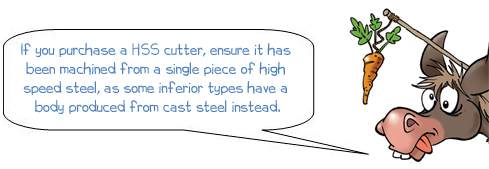What are the different Trend router bit materials? |
||||
The different materials that are used to produce Trend branded router bits and cutters |
||||
 |
||||
|
Trend produce tools of the highest standard and use the best material properly. Wonkee Donkee Trend exclusively supplies Trend products and here is a rundown of the materials their cutters are made of. |
||||
High speed steel (HSS) |
||||
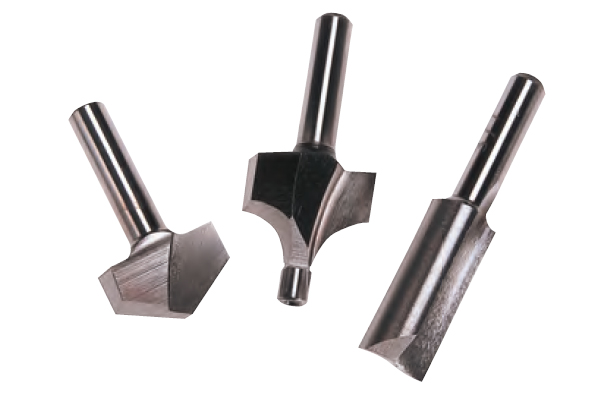 |
High speed steel is a type of hardened and treated high carbon steel. HSS cutters are machined from a single piece of high-speed steel, to the required flute profile and ground to a fine edge. |
|||
|
|
||||
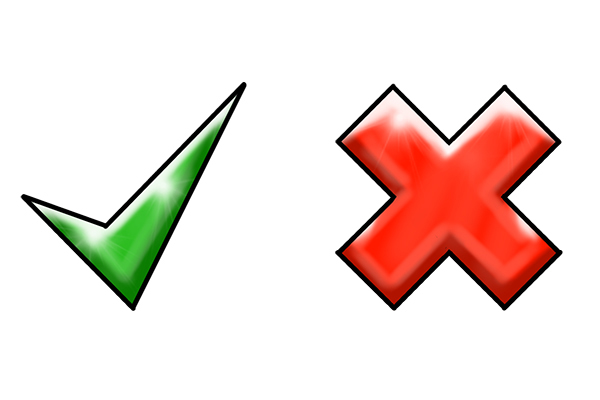 |
ADVANTAGES |
|
DISADVANTAGES |
|||||
|
|
|||||||
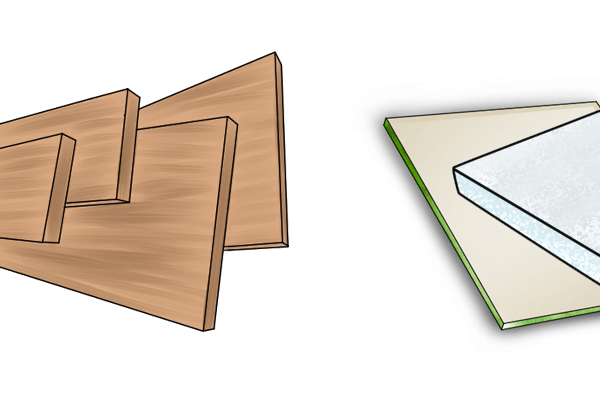 |
Best suited to:HSS router bits are best suited to nonabrasive natural timbers, PVC, and acrylics (non-tinted varieties). |
|||
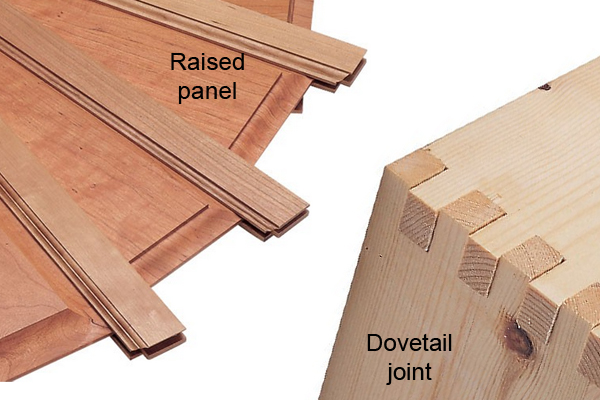 |
Because these router bits can be sharpened to a much finer degree, they are, when sharp, more suited to fine and detailed work that requires a very clean and precise finish straight from the router cutter.
Dovetailing in softwoods and panel raising being good examples of uses for these router bits. |
|||
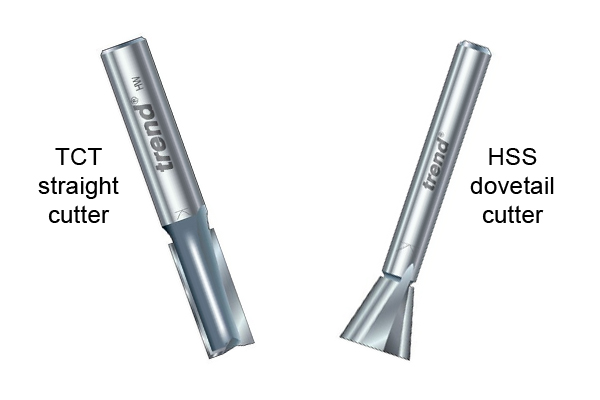 |
HSS router bits are often used in conjunction with more durable TCT cutters of similar size and profile - the latter to remove the bulk of the waste and the former to make a light finishing cut to achieve a non-feathered edge. |
|||
 |
||||
Tungsten carbide tipped (TCT) |
||||
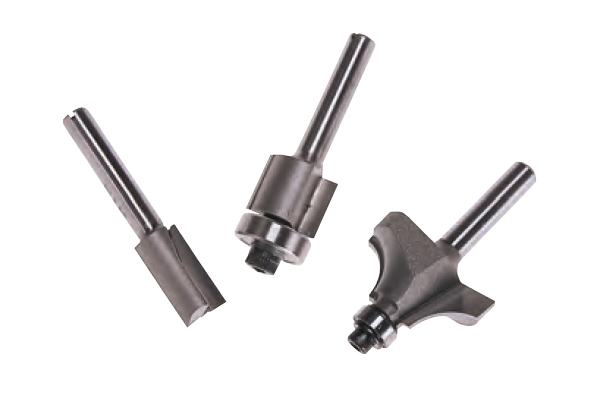 |
These routers bits or cutters have a body and shank machined from high-grade steel, and either tungsten carbide tips brazed onto each flute, or solid carbide inserts set into the shank (common with smaller cutters).
Tungsten carbide is an extremely hard compound of tungsten and carbon. |
|||
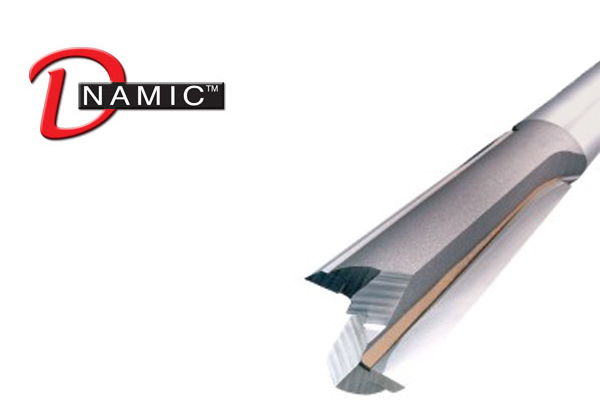 |
D-Namic CarbideMost of Trend's router bits either have tungsten carbide tips or are made of solid tungsten carbide and they use D-Namic carbide. D-Namic carbide is ground to a superior finish by automated router bits and has around twice the durability of any of its closest competitors. |
|||
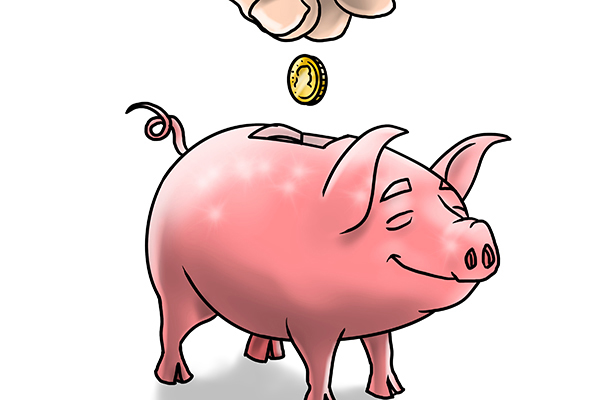 |
This extended lifespan makes it the most cost-effective product available, as you won't have to sharpen or replace your router cutters as often as you would if you were using a different brand of carbide. This is why Trend routing products are so highly regarded. |
|||
 |
ADVANTAGES |
|
DISADVANTAGES |
|||||
|
|
|||||||
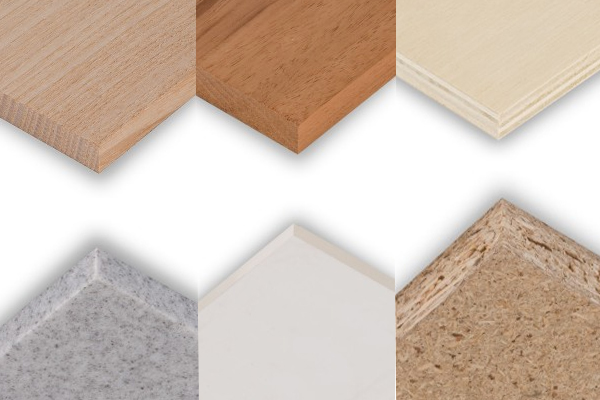 |
Best suited to:TCT cutters are designed for cutting the most abrasive materials, including natural timbers, plywood, chipboard, fibreboard including MDF and hardboard, glass fibre reinforced plastics (GRP), acrylics (tinted variety), and other abrasive plastics such as Tufnol®, and solid surface materials such as Corian®. |
|||
 |
||||
Solid tungsten carbide (STC) |
||||
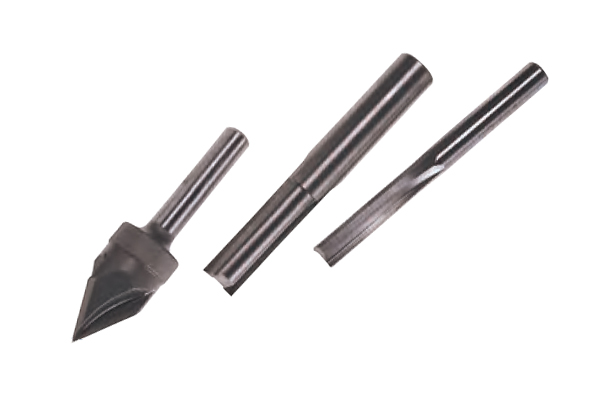 |
Solid tungsten carbide cutters are ground from a solid piece of tungsten carbide, usually of a harder grade than is used on TCT cutters, and still using D-Namic carbide . |
|||
 |
ADVANTAGES |
|
DISADVANTAGES |
|||||
|
|
|||||||
 |
Best suited to:Solid tungsten carbide cutters are designed for use on the same materials as tungsten carbide tipped ones. |
|||
 |
||||
Super high speed steel (HSSE) |
||||
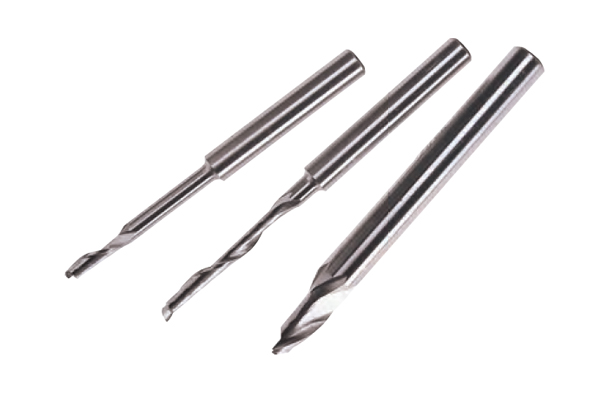 |
Super high speed steel router bits are produced from a specially develop high-grade steel that contains cobalt for extra strength, and they are precision ground to the highest tolerances. |
|||
 |
ADVANTAGES |
|
DISADVANTAGES |
|||||
|
|
|||||||
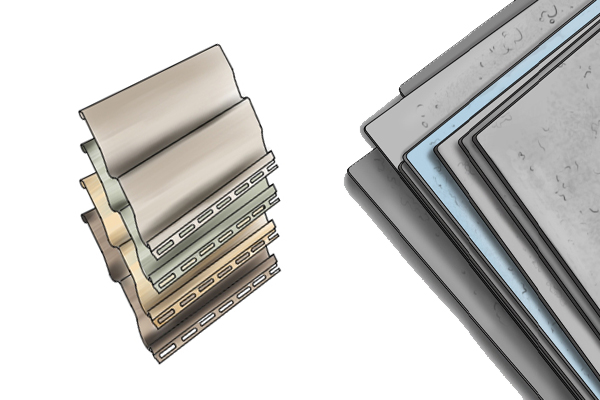 |
Best suited to:HSSE cutters are designed for use on uPVC and non-ferrous metals (e.g. aluminium).
They are generally used by tradespeople, typically window and door fabricators, for machining aluminium and uPVC extrusions. |
|||
Polycrystalline diamond tipped (PCD) |
||||
 |
These specially formulated router bits have Polycrystalline diamonds are bonded to tungsten carbide tips under extreme pressure and intense heat.
For more information on PCD cutters see: |
|||
 |
ADVANTAGES |
|
DISADVANTAGES |
|||||
|
|
|||||||
 |
Best suited to:PCD cutters can tackle the most abrasive materials including MDF, hardboard, hard natural timber, solid laminate and gemstone work surfaces. However, their expense warrants use only in very specialised or high-cost production applications on CNC or other large industrial fixed head routers with automatic feed. |
|||
Coatings |
||||
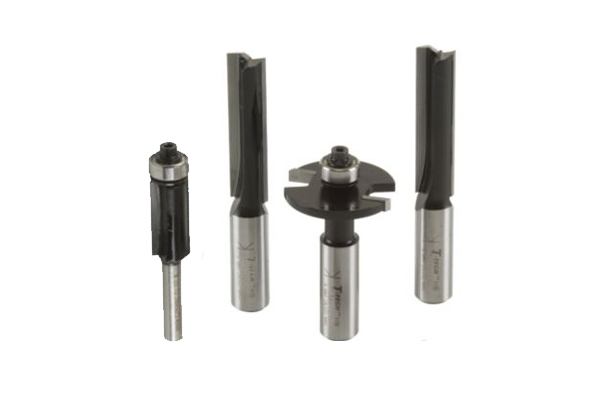 |
Polytetrafluoroethylene PTFEPolytetrafluoroethylene (PTFE) is a synthetic resin used to coat items such as frying pans, to help prevent food and residue becoming stuck to the surface. It is commonly referred to as its trade name – Teflon. all have PTFE coatings. |
|||
 |
ADVANTAGES |
|
DISADVANTAGES |
|||||
|
|
|||||||
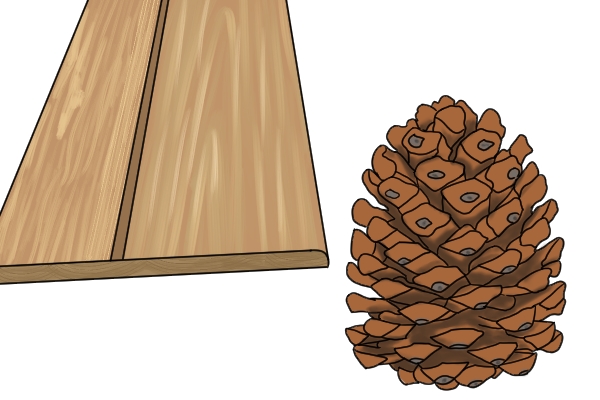 |
Best suited to:The materials a PTFE-coated cuttercan be used on will depend on the material the individual router bit is made of, however, they are usually used when routing very resinous wood such as pine. |
|||
 |
||||
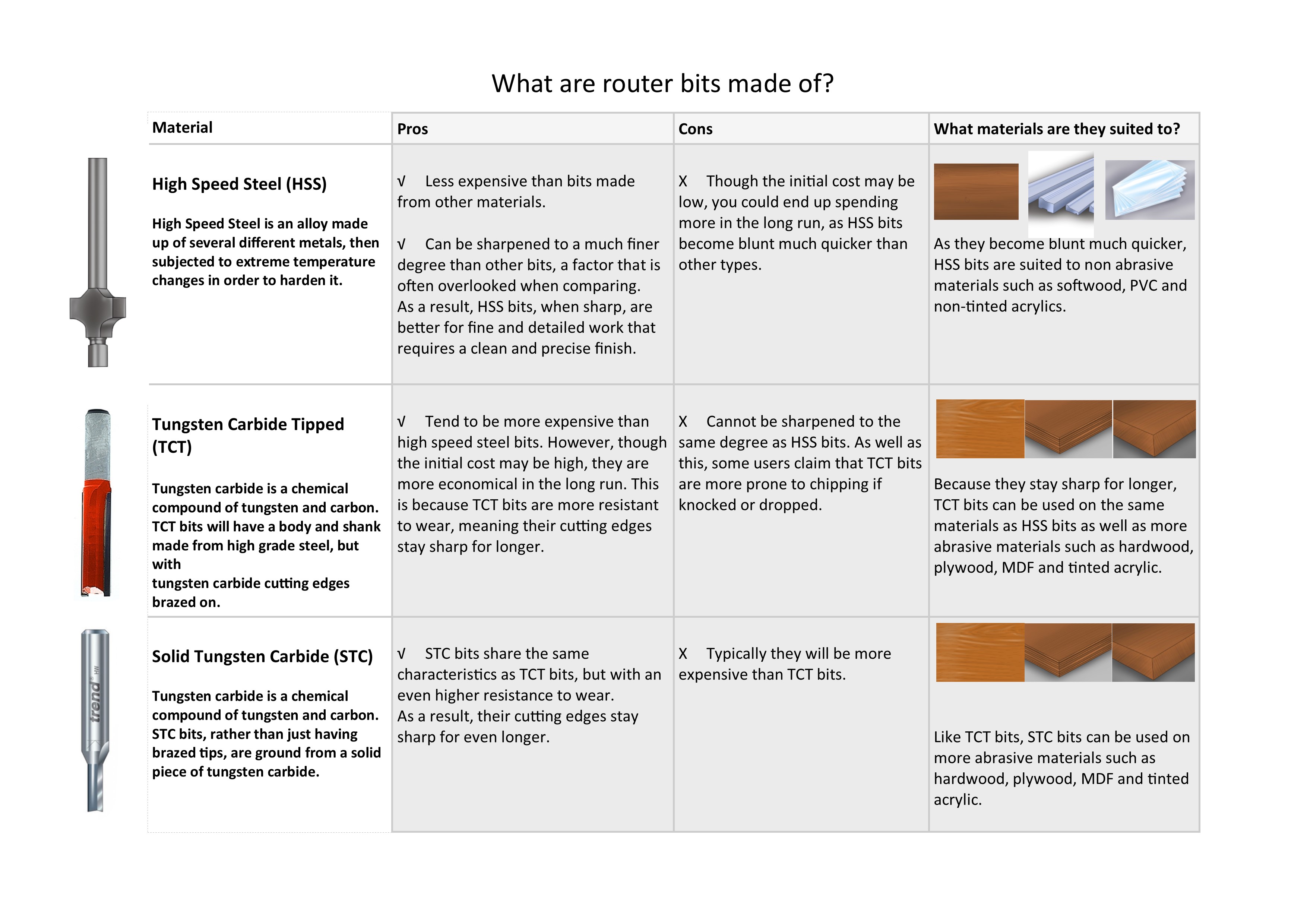 |
||||
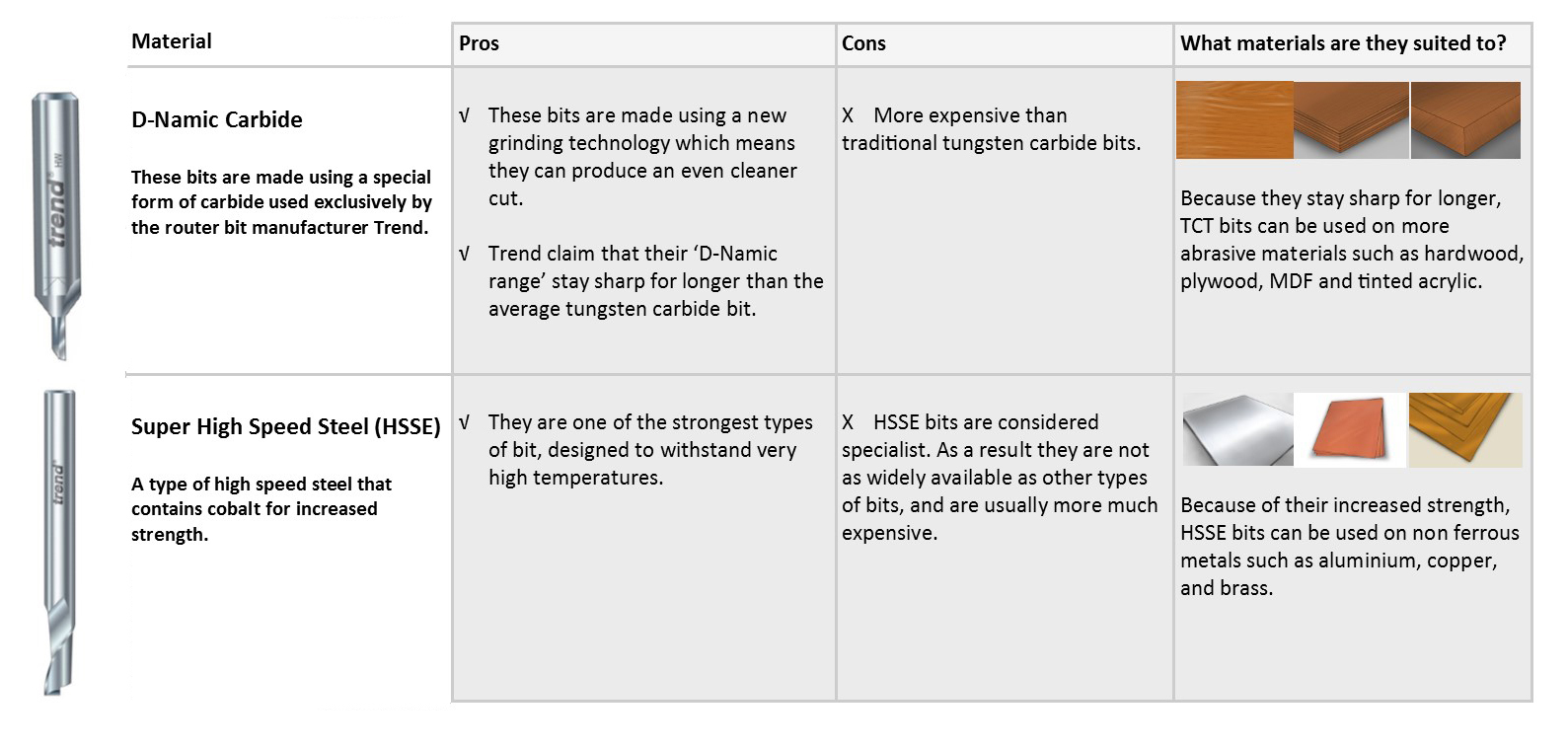 |
||||
 |
||||






